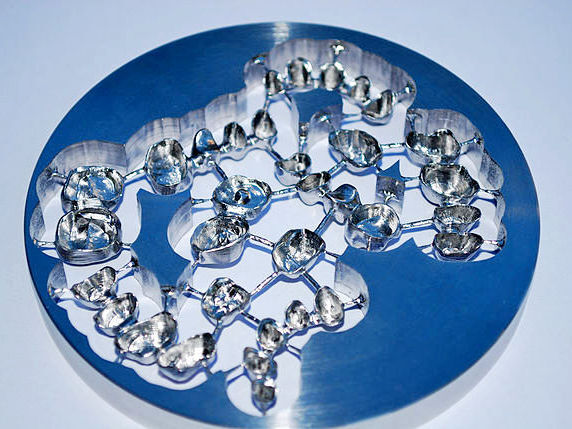
Cobalt-chrome (CoCr) as its name suggests, in general consists of chrome, cobalt and other metals (molybdenum, nickel, etc.). It is a metal alloy that has outstanding strength, as well as wear and corrosion resistance. Because of these features and it’s biocompatibility, cobalt-chrome is often used for making dental/orthopedic implants and rings.
Commandez en Cobalt-chrome (CoCr)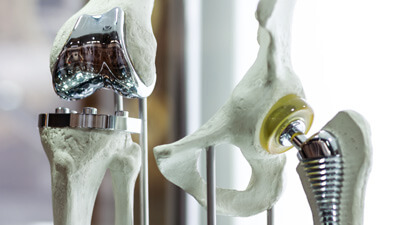
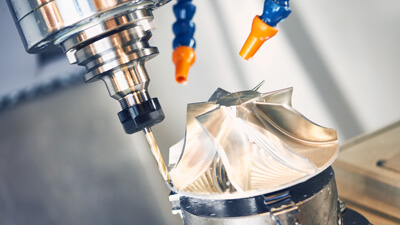
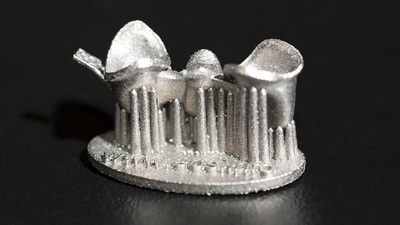
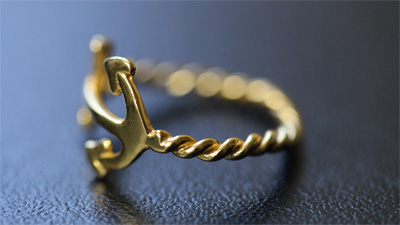
| Propriété | Valeur |
|---|---|
| Hardness | 363 - 402 HV * |
| Tensile Strength | 1290 - 1420 MPa * |
| Elongation | 25 - 29% |
| Yield strength (elastic limit) | 760 - 839 MPa |
| Density | ~8.5 - 10 g.cm^-3 |
| Melting point | 2430 °F (1330 °C) |
* Co-28Cr-6Mo alloy
Cobalt-chrome alloys possess incredibly high corrosion resistance thanks to the formation of a passive film composed of mostly Cr2O3 together with small amounts of cobalt and other metal oxides on the surface that protects the primary material. Due to its biocompatibility, wear-resistance and chemical inertness, it's widely applied in medicine and dentistry. CoCr also has excellent mechanical properties including increased hardness and tensile strength. This alloy is used for manufacturing wind turbines, cutting tools, jet engine components and other mechanical parts where high wear-resistance is required.
It had been already noted that cobalt-chrome alloy has amazing strength, it is very hard to break, bend, deform or even scratch. At the same time, it has appealing white color and shine that resembles precious metals like white gold or platinum. That’s why CoCr alloy has become a quite popular material for jewelry, especially wedding bands. The price for such rings is affordable comparing to regular materials like platinum or gold. In spite of all those benefits experts do not recommend using cobalt-chrome for making jewelry.
Rings and wedding bands made of cobalt-chrome can be dangerous in an emergency situation. Imagine if you get some sort of trauma that causes swelling to your fingers and you need to remove all the jewelry from those areas as quickly as possible. Usually, hospitals use special equipment to cut off a similar type of bands made of soft precious metals such as silver, gold, or platinum. Some of the modern diamond-tipped saws are capable to remove stainless steel and titanium bands relatively easy. But it takes much more time for cutting super solid alloys like cobalt-chrome. Specialists can spend up to ten minutes for that. That’s why doctors recommend avoiding rings made of hard alloys.
CoCr alloy obtained popularity in the dental industry at the beginning of the 20th century because of low costs and lower density in comparison to gold alloys. CoCr alloys tend to be corrosion resistant, which reduces complication with the surrounding tissues when implanted, and chemically inert that minimizes the possibility of irritation, allergic reaction, and immune response. CoCr alloys can have issues with ductility, which can eventually end up as deformation. Medical specialists should keep it in mind CoCr can be used in hip replacements. To compensate for this feature, the alloy has some nickel, carbon, and nitrogen. Among artificial joints that are made of CoCr include knee and hip joints.
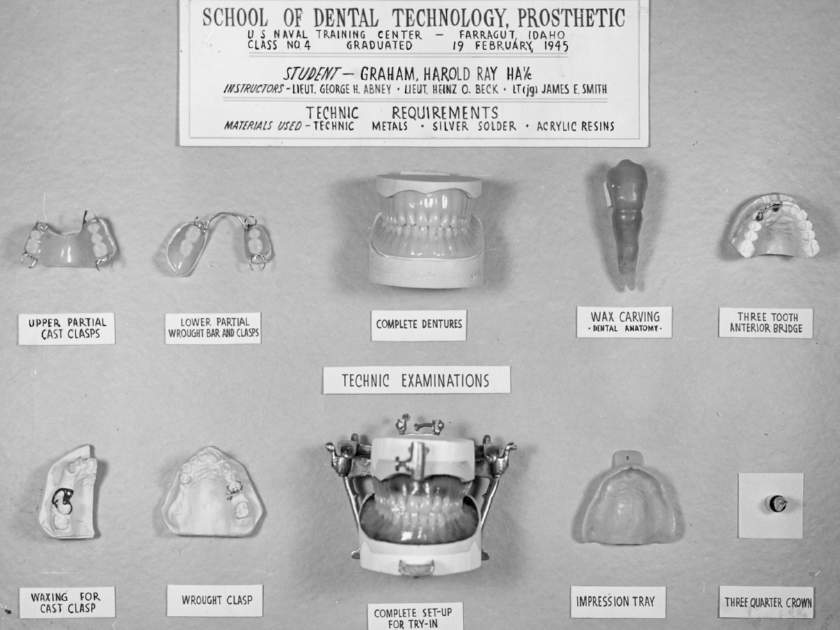
Cobalt-chrome alloys that meant to be used as implants are considered to be safe. However, materials with a high content of nickel must never be used as implants because of low biocompatibility. Besides, recent researches stated that some components of CoCr alloy can cause allergy. Identified in the patch test positive allergens were consistent with the components of the metal prostheses according to the comparative analysis of metal allergens. The prevalence of nickel (Ni) allergy was highest (22.8%), and women were significantly more allergic to palladium and Ni than men (P<0.05).
Cobalt-chrome alloys are quite hard to machine. According to some experts, cobalt chromium molybdenum-based alloys have machinability properties that are equivalent to other advanced materials such as titanium alloys that are also considered to be difficult to work with. In general, machining of high hardness materials such as cobalt chromium molybdenum alloys results in many undesirable problems, which is often associated with short tool life of cutting tools and poor surface quality due to heat generation and plastic deformation. Minimizing the cutting speed, feed rates, depth of cut and at the same time using a sharp cutting edge tool during machining reduce the high cutting temperature at the cutting zone. Specialists recommend using a positive rake angle tool to minimize the work hardening of the machined surface and built-up-edge by shearing the chip away from the work piece. Furthermore, the sharp cutting edge is able to improve the surface quality by preventing build-up of materials during machining. At the same time, tooling and machines should be sufficiently secured to avoid chatter and vibration which have a significant effect on the surface finish and tool fracture.
Cobalt-based alloys are used for manufacturing tools that are applied for injection molding of plastic parts using 3D printing. The excellent material qualities and high hardness of the material allow polishing components to a mirror-like finish. Such equipment can be produced with complex shapes, and the conformal cooling channels further enhance the tool’s life and increase productivity, part and surface quality.
Tous les commentaires (0)